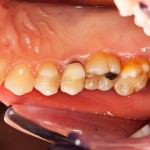
The use of ceramic materials to restoring posterior teeth has been increasing since the 1990s, and in 2003 a Cochrane review by Hayashi and Yeung was published . The aim of this review was to update that 2003 review by evaluating the clinical effectiveness of ceramic inlays including all articles published since 2002.
The PubMed, Cochrane, and Picarta databases were searched together with the reference lists of all retrieved articles. There were no language restrictions and randomized clinical trials (RCTs), controlled clinical trials (CCTs), or case series on Class I and Class II ceramic inlay (fired, milled, cast, or pressed ) restorations in permanent premolar and molar teeth were included. Study quality was assessed using a 24-item assessment.
- Three studies (two RCTs and one CCT) all comparing a ceramic material to a composite resin material were included.
- No new reliable evidence was found to update the answer to the hypothesis that there was no difference in longevity, at least in the first year postoperative.
- The evidence found regarding postoperative discomfort backs the previous conclusion that there was no difference.
- New evidence found on color matching suggests that there is no significant difference in color match over assessment periods of up to 57 months.
The authors concluded
Overall, ceramic materials can now be considered to perform as well as alternative restorative materials when used in inlay restorations. Because of a lack of sufficient, long-term research, this conclusion can only be supported for periods of up to 1 year for longevity and up to 57 months for colour match.
Comment
With the current pressure to reduce amalgam use in dentistry it is disappointing that the authors did not find any more high quality studies to a provide robust answers regarding the clinical effectiveness of ceramic inlays. The 2003 Hayashi and Yeung review only identified two studies only one of which they finally included and this latest review only 3 of the 23 articles subjected to quality assessment were included. The 2003 Cochrane review concluded: –
There is no strong evidence available to support any differences in the clinical performance of ceramic inlays and other posterior restorations. There are a limited number of well-designed clinical trials within this research area. Greater attention to the design and reporting of studies should be given to improve the study quality of ceramic restoration trials.
So it would seem that a decade has passed and we are still short of good evidence as to the clinical effectiveness of ceramic inlays.
Links
Pol CW, Kalk W. A systematic review of ceramic inlays in posterior teeth: an update. Int J Prosthodont. 2011 Nov-Dec;24(6):566-75. Review. PubMed PMID:22146257
Hayashi M, Yeung A. Ceramic inlays for restoring posterior teeth. Cochrane Database of Systematic Reviews 2003, Issue 1. Art. No.: CD003450. DOI: 10.1002/14651858.CD003450.

[…] No strong evidence available to support any differences in the clinical performance of ceramic inlay… […]